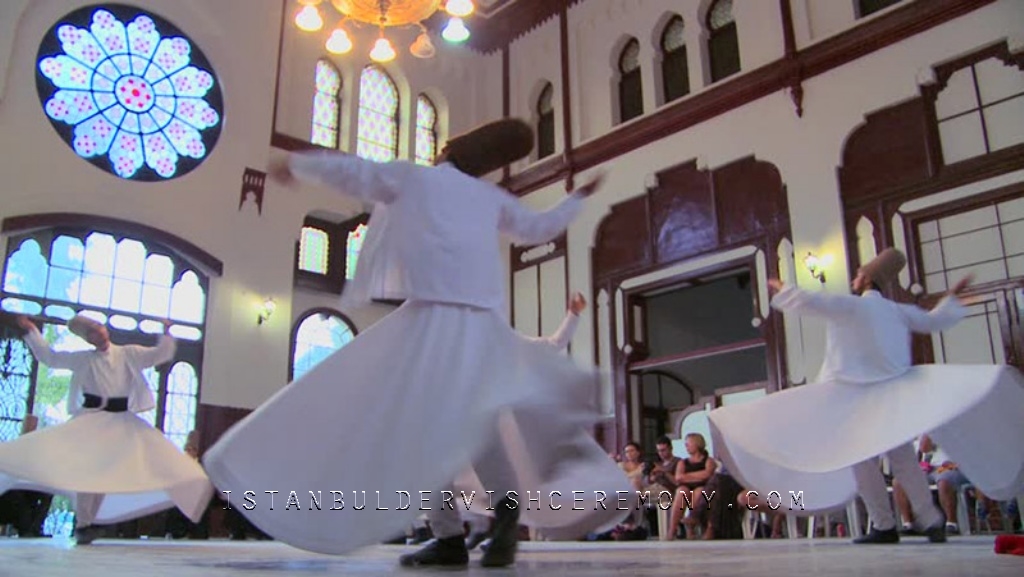What does a dervish do
What does a dervish do ?
Dervish, Arabic darwīsh, any member of a Ṣūfī (Muslim mystic) fraternity, or tariqa. Within the Ṣūfī fraternities, which were first organized in the 12th century, an established leadership and a prescribed discipline obliged the dervish postulant to serve his sheikh, or master, and to establish a rapport with him. The postulant was also expected to learn the silsilah, the spiritual line of descent of his fraternity.
The main ritual practiced by the dervish is the dhikr, which involves the repeated recitation of a devotional formula in praise of Allah as a means of attaining an ecstatic experience. The rituals of the Ṣūfī brotherhoods stress the dervishes’ attainment of hypnotic states and ecstatic trances through ritual recitation and through such physical exertions as whirling and dancing. Dervishes can be either resident in community or lay members, both of these groups being generally drawn from the lower classes. In the Middle Ages, dervish communities played a vital role in religious, social, and political life in the central Islāmic lands, but their monasteries now are often under government control, and their theological standing is discounted by orthodox theologians. A wandering or mendicant dervish is called a fakir (faqir).
Dervish dancing
There is one outstanding example of pure dance: that of the whirling dervishes, an art that has been practiced since the 13th century. The procedure is part of a Muslim ceremony called the dhikr, the purpose of which is to glorify God and seek spiritual perfection. Not all dervish orders dance; some simply stand on one foot and move the other foot to music. Those who dance, or, rather, whirl, are the Mawlawī dervishes, an order that was founded by the Persian poet and mystic Jalāl al-Dīn al-Rūmī at Konya, in Anatolia, in the 13th century.
The performance, for which all the participants don tall conical hats and black mantles, takes place in a large hall in the tekke, the building in which the dervishes live. The dervishes sit in a circle listening to music. Then, rising slowly, they move to greet the shaykh, or master, and cast off the black coat to emerge in white shirts and waistcoats. They keep their individual places with respect to one another and begin to revolve rhythmically. They throw back their heads and raise the palms of their hands, a symbol of giving and taking. The rhythm accelerates, and they whirl faster and faster. In this way they enter a trance in an attempt to lose their personal identities and to attain union with the Almighty. Later they may sit, pray, and begin all over again. The dhikr ceremony always ends with a prayer and a procession.
How can one participate?
You can make reservations from here ( online ), you can e-mail us or you can visit our ticket center in advanced and make your reservation in person. Here are our details ;
LOCATION of our Meeting Point in Sultanahmet :
https://goo.gl/maps/uXuyRmELZsx
Contact People : Mr. Alp – Mr. Nurdogan
( Phone : +90 544 220 10 22 / +90 212 527 68 59 )
Here is our address :
Google Maps : https://goo.gl/maps/uXuyRmELZsx
Istanbul Dervish Ceremony – Les Arts Turcs / Culture Center
Alemdar Mh. Incili Çavus St.
No: 19 Floor : 3 (Behind The Underground Cistern)
Sultanahmet 34400
Istanbul, Turkey
-
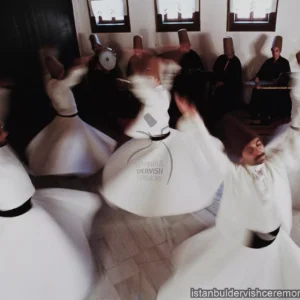 Whirling Dervish Ceremony in Sultanahmet980.00₺
Whirling Dervish Ceremony in Sultanahmet980.00₺ -
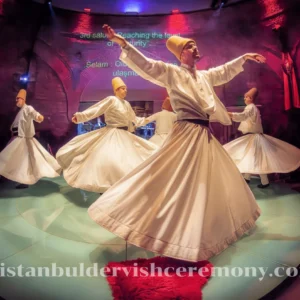 Hocapasha Culture Center Whirling Dervish Ceremony1,380.00₺
Hocapasha Culture Center Whirling Dervish Ceremony1,380.00₺ -
 Whirling Dervish Ceremony Real Monastery in Fatih1,480.00₺
Whirling Dervish Ceremony Real Monastery in Fatih1,480.00₺ -
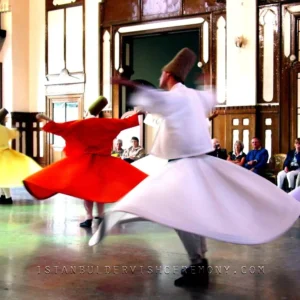 Whirling Dervish Ceremony in Sultanahmet Sirkeci Train Station200.00₺
Whirling Dervish Ceremony in Sultanahmet Sirkeci Train Station200.00₺ -
 Whirling Dervish Ceremony in Saruhan Cappadocia1,300.00₺
Whirling Dervish Ceremony in Saruhan Cappadocia1,300.00₺ -
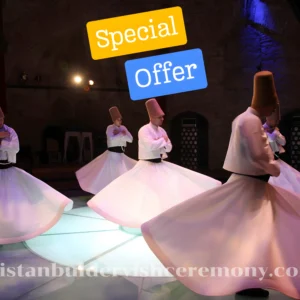 Hocapasha Culture Center Whirling Dervish Ceremony Happy Hour Ticket1,000.00₺
Hocapasha Culture Center Whirling Dervish Ceremony Happy Hour Ticket1,000.00₺ -
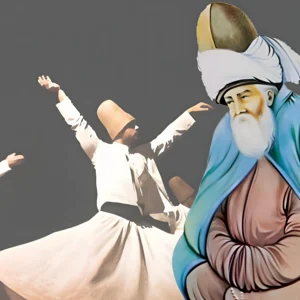 Seb-i Arus Rumi Ceremony in Istanbul1,480.00₺
Seb-i Arus Rumi Ceremony in Istanbul1,480.00₺ -
 Learn How to do Sacred Whirling Dervish Dance4,600.00₺
Learn How to do Sacred Whirling Dervish Dance4,600.00₺ -
 Yenikapı Mevlevihanesi Whirling Dervishes Show
Yenikapı Mevlevihanesi Whirling Dervishes Show
